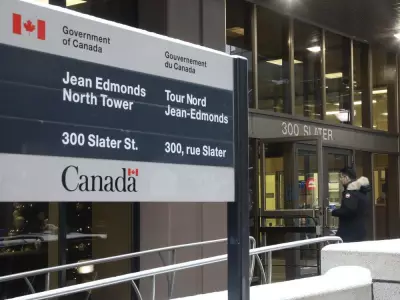
The chilling investigation into Michael White's brutal murder began with a grim discovery that would haunt Edmonton detectives for months. On May 5, 2019, police responded to a southeast Edmonton industrial area where they found White's body discarded like trash—a life violently ended and left in the shadows of the city's infrastructure.
The Crime Scene That Told a Horrific Story
When officers arrived at the scene near 75 Street and 40 Avenue, they encountered a disturbing sight. White's body showed clear signs of violence, but the initial evidence offered few clues about his killer. The location itself—an industrial zone—suggested the perpetrator had deliberately chosen a spot where discovery might be delayed.
"It was immediately apparent this was a homicide," investigators recalled. "The violence was evident, but the why and who remained mysteries we needed to unravel."
The Breakthrough That Changed Everything
For weeks, the investigation stalled despite extensive forensic work. Then came the tip that would crack the case wide open. A member of the public came forward with crucial information that connected the dots police had been struggling to link.
This tip led investigators to a suspect they hadn't previously considered. More importantly, it provided the context needed to understand what might have motivated such brutal violence against the 36-year-old White.
DNA Evidence Seals the Case
Armed with the new information, police obtained a DNA warrant that would become the smoking gun in their investigation. The forensic evidence conclusively linked their suspect to the crime, providing the scientific proof needed to support the circumstantial case they'd been building.
The DNA match transformed their investigation from theory to certainty, giving prosecutors the evidence required to pursue murder charges with confidence.
A Community's Role in Justice
This case highlights a recurring theme in criminal investigations: the critical importance of community involvement. Without that single tip from a concerned citizen, White's murder might have remained in the cold case files indefinitely.
"This demonstrates how public cooperation can make the difference between justice served and justice denied," law enforcement officials emphasized. "Someone saw something, said something, and ultimately helped bring closure to a grieving family."
The Aftermath of Violence
While the arrest brought some measure of justice, it couldn't erase the tragedy of a life cut short. White's story serves as a sobering reminder of how quickly ordinary lives can intersect with extraordinary violence.
The investigation revealed the meticulous nature of police work—how countless hours, forensic analysis, and sometimes, a single piece of community information can converge to solve even the most challenging cases.
As Edmonton continues to grapple with violent crime, the resolution of White's murder stands as both a warning and a reassurance: that those who commit brutal acts can be brought to justice, but often only with the help of the communities they've victimized.





